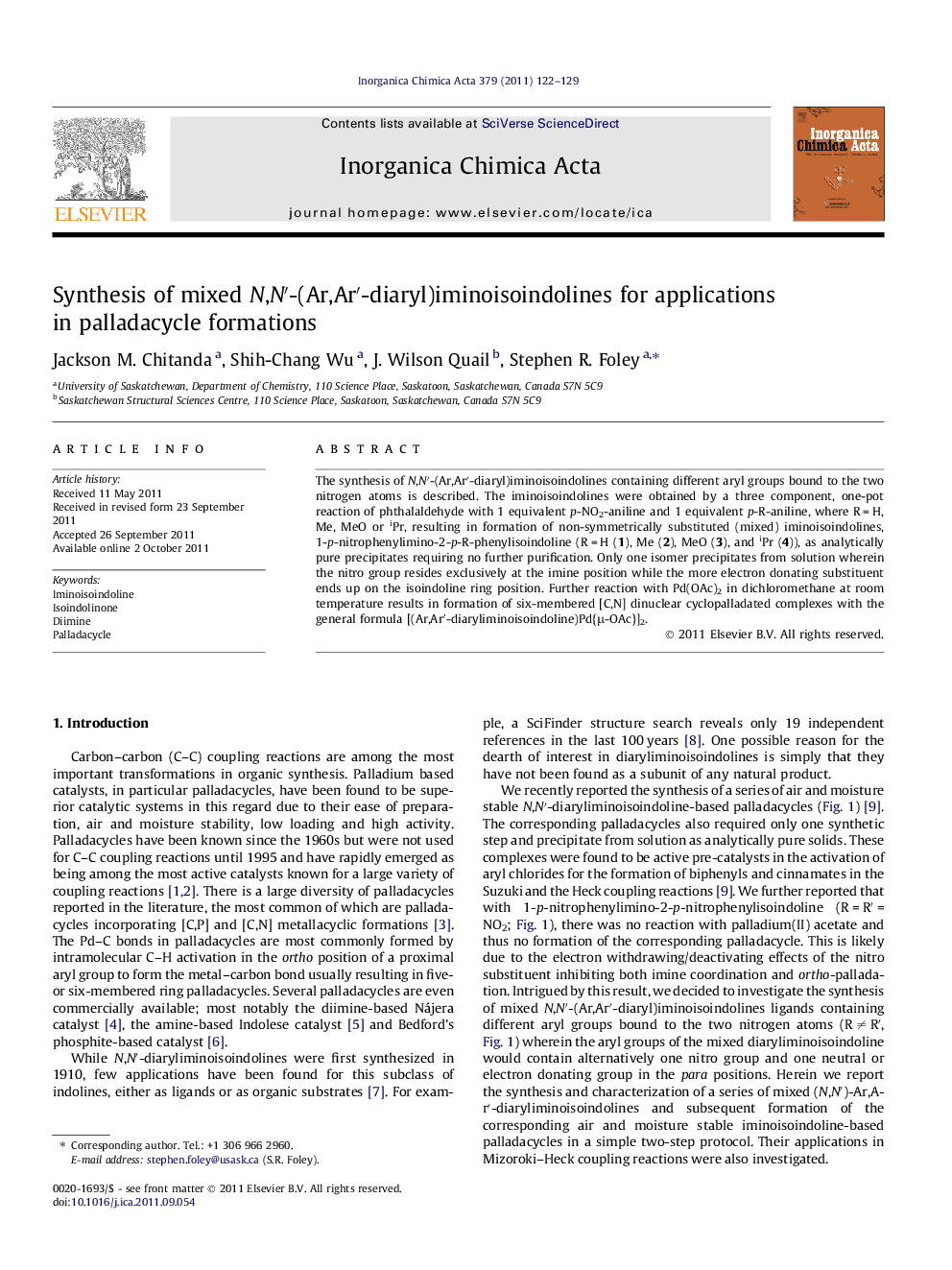| Article ID | Journal | Published Year | Pages | File Type |
|---|---|---|---|---|
| 1306164 | Inorganica Chimica Acta | 2011 | 8 Pages |
The synthesis of N,N′-(Ar,Ar′-diaryl)iminoisoindolines containing different aryl groups bound to the two nitrogen atoms is described. The iminoisoindolines were obtained by a three component, one-pot reaction of phthalaldehyde with 1 equivalent p-NO2-aniline and 1 equivalent p-R-aniline, where R = H, Me, MeO or iPr, resulting in formation of non-symmetrically substituted (mixed) iminoisoindolines, 1-p-nitrophenylimino-2-p-R-phenylisoindoline (R = H (1), Me (2), MeO (3), and iPr (4)), as analytically pure precipitates requiring no further purification. Only one isomer precipitates from solution wherein the nitro group resides exclusively at the imine position while the more electron donating substituent ends up on the isoindoline ring position. Further reaction with Pd(OAc)2 in dichloromethane at room temperature results in formation of six-membered [C,N] dinuclear cyclopalladated complexes with the general formula [(Ar,Ar′-diaryliminoisoindoline)Pd{μ-OAc}]2.
Graphical abstractThe synthesis of N,N′-(Ar,Ar′-diaryl)iminoisoindolines containing different aryl groups bound to the two nitrogen atoms is described along with formation of their corresponding palladacycles. The iminoisoindolines were obtained by a three component, one-pot reaction resulting in formation of non-symmetrically substituted (mixed) iminoisoindolines as analytically pure precipitates requiring no further purification.Figure optionsDownload full-size imageDownload as PowerPoint slideHighlights► Synthesis of diaryliminoisoindolines incorporating two different aryl groups. ► Mechanistic implications in the formation of diaryliminoisoindolines. ► Palladacyclic complexes formed in a simple two step reaction. ► Electron-withdrawing groups deactivate palladacycles in Heck reaction.
